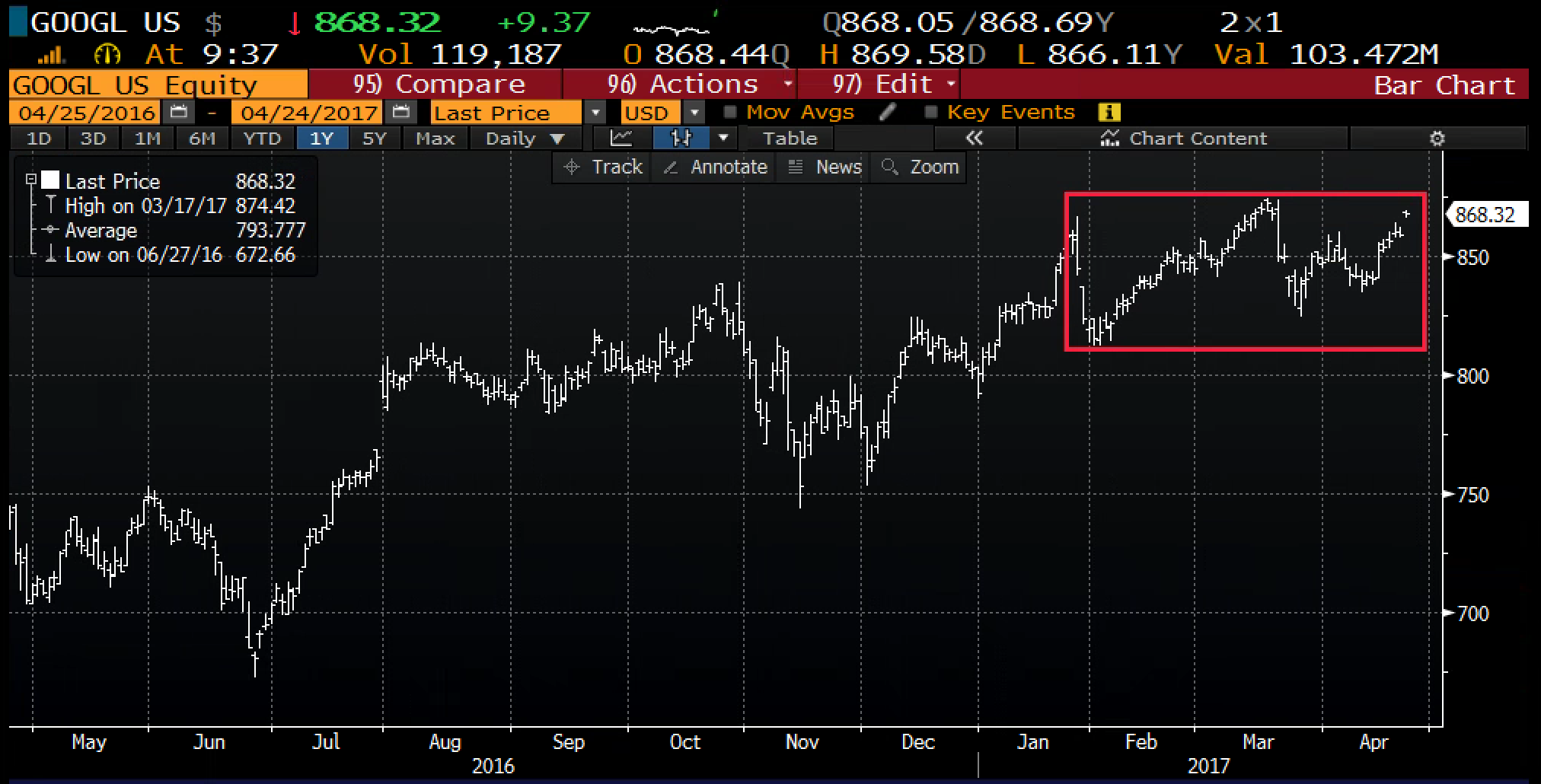Yesterday, the New York Times ran a fairly controversial opinion piece from USC media professor and author Jonathan Taplin. In it he discussed the modern day tech monopolies of Alphabet (GOOGL) Amazon (AMZN) and Facebook (FB). It included this stunning stat:
each dominates its corner of the industry: Google has an 88 percent market share in search advertising, Facebook (and its subsidiaries Instagram, WhatsApp and Messenger) owns 77 percent of mobile social traffic and Amazon has a 74 percent share in the e-book market. In classic economic terms, all three are monopolies.
The article was titled Is It Time to Break Up Google?, quoting President Woodrow Wilson’s counselor Louis Brandeis 100 years ago (who would go on to be one of his Supreme Court appointments) as it related to the risks of such large enterprises:
“in a democratic society, the existence of large centers of private power is dangerous to the continuing vitality of a free people.”
As far as the dangers to a free people….
We need look no further than the conduct of the largest banks in the 2008 financial crisis or the role that Facebook and Google play in the “fake news” business to know that Brandeis was right.
I think it is safe to say that no matter what side you were during the brutal political season of the last two years, we can all agree that GOOGL and FB were slow to admit they had any responsibility (as media empires) for the spread of fake news on their platforms. And they still have yet to really acknowledge the dangers that their inaction on fake news poses to our political process. Sad!
The other point Taplin makes is one of regulation if these companies (Google in particular)
have become natural monopolies by supplying an entire market’s demand for a service, at a price lower than what would be offered by two competing firms? And if so, is it time to regulate them like public utilities?
One of the greatest tricks Silicon Valley ever pulled was was re-branding capitalism as “revolutionary”. And we tend to give tech behemoths a pass in ways we would never for other multinational conglomerates. But that’s what these companies no matter how many Foosball tables they have in their headquarters. And when they grow to such massive size it allows them to “disrupt” other industries by making segments of their business loss leaders, financed by other profitable segments (and investors willing to finance unprofitable endeavors). While innovating in lots of areas, these massive monopolies stifle innovation in others. Outside their own core business of course.
GOOGL has seven properties with over a billion active users, in each of these categories like Gmail, or Youtube it is hard to find a close second. AMZN is expected to book close to $200 billion in sales this year, most in retail, marketing year over year increase of 20% or so, the rest of the retail industry is suffering massive declines, and who in their right mind would launch a competitor to AMZN? The guys who built Jet.com a few years ago did so knowing that if they had the slightest bit of early success they would quickly sell to one of their desperate competitors., which they did last year to Walmart for $3.3 billion with less than $1 billion in sales. And then FB, see TWTR and SNAP user growth, or lack thereof.
Despite Trump’s tough talk on the campaign trail about AMZN, I doubt this administration’s Justice Department looks to crack down.
As I write, shares of GOOGL are very near to the 52 week and all time high they made in March, up nearly 10% on the year. While that seems quite dandy, the stock has massively underperformed mega-cap tech peers AAPL, AMZN & FB whose year to date gains more than doubled theirs, up 24%, 21% and 25% respectively.
GOOGL will report Q1 results Thursday after the market close. The options market is implying about a 3.25% move in either direction Friday, which is a tad rich to its average one day post earnings move of 2.6%, but well below its average over the last ten years of 5.3%.
For those of you whole like pictures, the ytd range in GOOGL might be instructive, as there is no overhead resistance above the recent high at $876, while the Jan/Feb lows between $800 and $815 should serve as fairly healthy technical support. We will be sure to follow-up with a more in-depth preview.

Lastly, the New York Times also ran a good description of how GOOGL is making their money in web advertising, and its interplay with search and the shift to mobile. Oh and you might have guessed that Amazon is dictating a good bit of behavior both by consumers and advertisers:
How Google Cashes In on the Space Right Under the Search Barhttps://t.co/keEK5lNHGo via @nytimes
Amazon coming yo. pic.twitter.com/cyFNbnQexe
— Dan Nathan (@RiskReversal) April 24, 2017